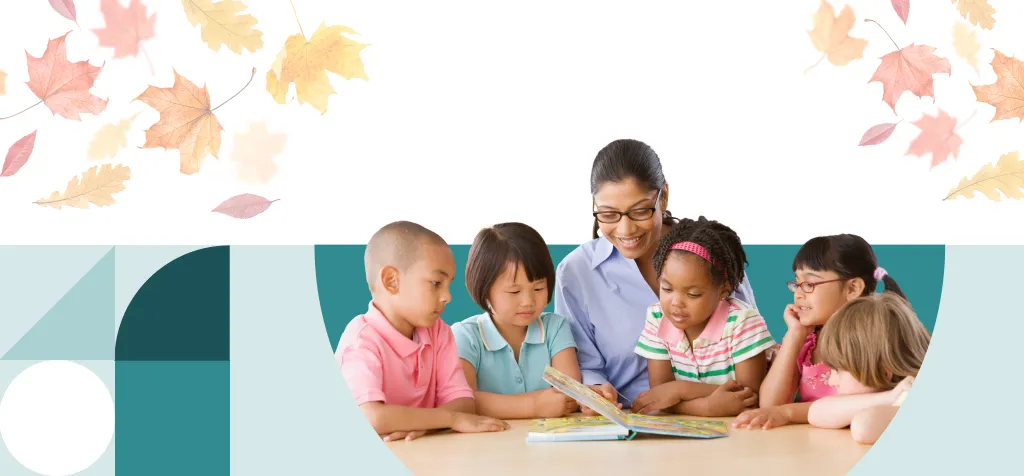
Turning Over a New Leaf:
How to Navigate Harmony SEL
by Mimi Seeley, Harmony Client Success Associate
“Building relationships with students is a critical component to teaching the content. Only when a student feels safe and seen can they truly embrace learning the curriculum.” – Alex Kajitani, California Teacher of the Year 2009
The school year is well underway for many educators and students alike. If you’re reading this, then, more than likely, you decided to use Harmony’s SEL curriculum this school year as a means of supporting your SEL instruction. You know the benefits and believe in the mission behind the curriculum. Still, you might wonder, “Where do I begin?” and “What do I need to know?” Here are some helpful tips and tricks for using Harmony this school year.
Explore the Portal
Snuggle up with a cup of coffee — or herbal tea — and take some uninterrupted time to explore the Harmony portal and familiarize yourself with the content. · Browse through all the materials, training, and resources that are available to you · From the Dashboard, dive into the section titled “Getting Started,” where you will find a detailed program overview, a welcome letter to send home to your students’ families, and planning guides for implementing Harmony into your daily instruction · For an overview of the year ahead, open the scope and sequence document within the tab labeled “Program Resources” Giving yourself some time to explore now will support your ability to provide effective SEL instruction throughout the months to come.
Create a Plan
As a teacher who used Harmony within the classroom, I found it beneficial to decide early on how and when I would build Harmony into the school day. From there, I established routines around my Everyday Practices and unit lessons implementation. This planning ensured that I was able to keep up the pace, and planning brought a sense of comfort and stability to me and my students. · For Meet-Up, choose a ten-minute block of time that works for your class and prioritize this opportunity for connection each day. I loved starting the day with Meet-Up, as this allowed for a transition into our classroom’s community. · Buddy-Up is also designed to be used daily. Like Meet-Up, Buddy-Up can be implemented within a five-to-ten-minute period. It’s best to seamlessly weave it into your instructional hours so that it reinforces the idea that peer interaction is a valuable part of our day-to-day routines.
Check out Harmony SEL Everyday Practices
· It is recommended that you teach one Harmony lesson a week. Do so either in a 45-minute block of time or over several days by breaking the lesson into three parts.
· Check out the Planning and Pacing Guides under “Program Resources” for more ideas around scheduling — including information on how to integrate Harmony into your small group rotations.
Teaching a Unit
As you dive into your first unit of instruction, I encourage you to set aside a little time for planning and preparation. This will ensure that you move through the lessons with greater ease and efficacy.
· Begin by navigating through all the unit resources (a home letter, unit-specific vocabulary, educator SEL, etc.) and developing an understanding of the unit’s goals.
· Preview all the lessons within a unit before instruction to provide yourself with knowledge of how they come together to form a cohesive whole.
· Determine which materials you’d like a physical copy of and print them out — this ensures that you aren’t left scrambling for them five minutes before the school bell rings.
· While exploring the upcoming unit, take some time to consider how the learning goals of the unit, and the unit’s lessons, could be integrated into your classroom. We will soon have Literature Alignment Guides to support this integration.
Further Your Learning
As with any new undertaking, there is a lot to learn, and questions will likely come up along the way. We at Harmony are here to support you through this process.
· Each month, we offer webinars and events that touch upon various aspects of Harmony Third Edition. Review the calendar and see if you can find a session that will work for you
· Check out the Educator SEL embedded within the landing page of each unit for aligned Inspire modules
Check out this example of an aligned Inspire module
· Contact us at Harmony with any questions you have. We want to help!
Final Thoughts
“Teaching SEL is not something that slows down the teacher because it is one more thing to do; rather, teaching SEL is like taking a moment to pull back a slingshot so that learning can shoot forward and be accelerated.” – Alex Kajitani, California Teacher of the Year 2009
Every student’s social, emotional, and cognitive skills are crucial and shouldn’t be left to chance. With a foundation in researched, established methodology, Harmony will support you as an educator as you work to address SEL within your classroom. These tips and tricks will assist you as you get going. Now, it’s time to dive in and begin your year with Harmony.
Learn more at harmonysel.org and start implementing SEL with the Harmony Online Learning Portal.

